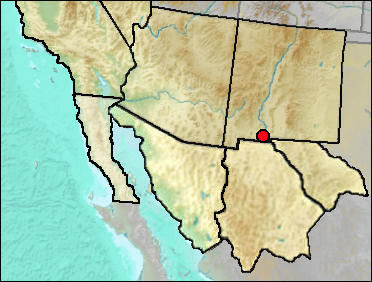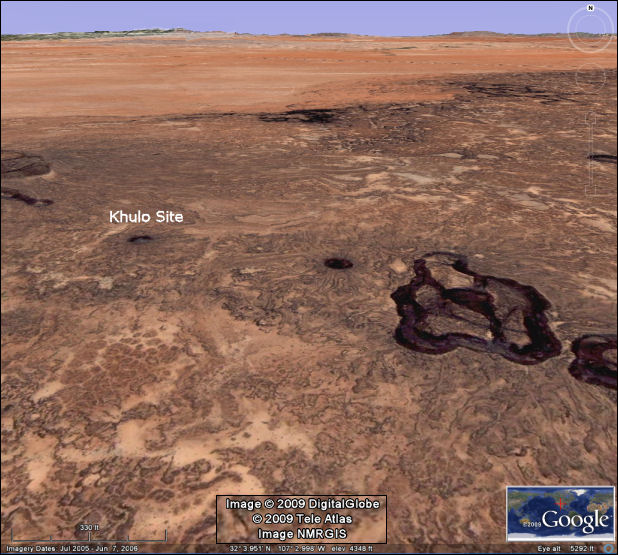 Age. Holocene. 14C dates of 1700
± 70 (TX 1557) are on wood fragments from Microtus level. A wood sample
just below that level is 1550 ± 60 BP (TX 1556A); charcoal from same levels have
a date of 8210 ± 220 (TX 1556B).
Age. Holocene. 14C dates of 1700
± 70 (TX 1557) are on wood fragments from Microtus level. A wood sample
just below that level is 1550 ± 60 BP (TX 1556A); charcoal from same levels have
a date of 8210 ± 220 (TX 1556B).
General Description. The site is within a lava hill with an opening on the top into a chamber widening below. The entrance is about 3 m in diameter. A debris cone, rising about 7.5 m from its intersection with the chamber walls, lies bout 9 m below the entrance. The chamber is ca. 30 m in diameter at the base. Details and sketch maps are given in Smartt (1972).

Discussion. The reason for including this Holocene site is the light thrown on the early Holocene in the area and relationship to taxa hanging on from the terminal Wisconsin. Two or three taxa more typical of the Wisconsin apparently were able to hang on after the warming and drying trend following the end of the Pleistocene was well under way (typical Holocene taxa are not listed here). Presence of Microtus pennsylvanicus implies sedge beds, probably in the Rio Grande Valley to the east and present as a rare raptor carry-in. The Mexican Woodrat (Neotoma mexicana) is common and probably indicative of cooler temperatures, though it is known to occur at lower than normal elevations in lava or boulder fields (Findley 1987).
The specimen of Geococcyx californianus, although certainly a large roadrunner, is marginal for G. c. conklingi and might represent a very large C. c. californianus, small C. c. conklingi, or a transitional form between the two.
Fig. 1. Google Earth view of the Khulo Site (dark structure below the label) and the surrounding volcanic field. View to the north. Aden Crater is partially visible to the northwest of the Khulo Site.
Fauna.
†Geococcyx californianus cf. conklingi—Conkling's
Roadrunner (Harris and Crews 1983)
Microtus pennsylvanicus—Meadow Vole (Smartt 1977)
Neotoma mexicana—Mexican Woodrat
Literature. Findley 1987; Harris and Crews 1983; Smartt 1972, 1977.
Last Update: 12 Jun 2009